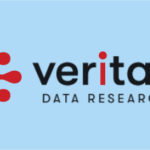CodeRx’s open-source drug ontology now available as part of Tuva’s open-source healthcare analytics platform.
A major subset of all healthcare data are the medications administered and prescribed to patients. In medication data, specific drugs are captured with terminologies like NDC (National Drug Codes) and RxNorm. Using these terminology sets is one of the most fundamental parts of healthcare research and analysis, from health economics and outcomes research to population health analysis.
However, using medication data and their terminologies is challenging. For starters, there are hundreds of thousands of NDC and RxNorm codes and the complete list is constantly being updated. NDCs in particular are downright strange: They are 11-digit codes composed of 3 distinct sub-parts and often a digit is missing, but it’s difficult to determine which sub-part it’s missing from. Simple right?
A further challenge is determining which codes identify which drugs or classes of drugs. For example there are over 1,800 distinct NDCs representing 19 distinct RxNorm codes for metformin, a common diabetes drug. Identifying all the medications of interest for your research or analytics project can be a massive pain.
CodeRx to the Rescue
The good news is that a lot of drug data is open-source. The bad news is that it’s not very well organized or easy to work with. CodeRx is working to solve this problem by building an open-source drug ontology. They do the hard work of aggregating and organizing open drug data so that it’s up to date and usable.
Open drug data holds a lot of value for many different use cases, but reliably accessing this data on an ongoing basis requires either a well thought-out technical infrastructure or a lot of error-prone manual work. CodeRx is on a mission to make it much easier to unlock the potential of this data for researchers and analysts, from startups to large organizations.
One fundamental use case is identifying which medication product is represented by a given NDC. CodeRx aggregates NDCs from at least five different sources, normalizes the description of the medication product represented by the NDC, and includes an open standard identifier for interoperability with other systems.
Another use case is translating NDCs to RxNorm, which is more commonly used in research and analysis to define treatments and lines of therapy, and from there rolling up RxNorm into drug classes. This makes it simple to work with entire classes of drugs (e.g. beta blockers) rather than figuring out the thousands of NDCs or RxNorm codes that make up a particular class.
More information about CodeRx can be found on their website and on GitHub.
What it Means for Tuva Users and Customers
At Tuva Health we’re incredibly excited to partner with CodeRx and add their open-source drug ontology to the Tuva Project and Tuva Data Factory. This partnership creates immediate and significant value for any individual or organization using Tuva for healthcare analytics or research.
For example, Tuva users can now translate NDCs to RxNorm codes and identify specific drugs or classes of drugs in their claims or clinical datasets in a few lines of code. This dramatically speeds up any research that involves defining drugs as part of the project.
For more information check out the Tuva Project or contact Tuva Health directly here.

